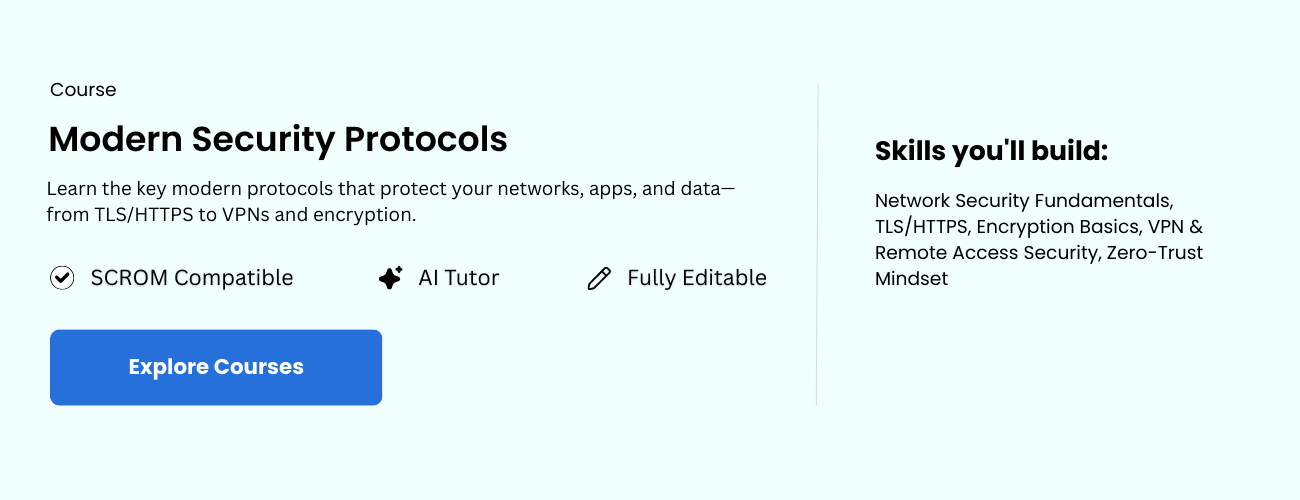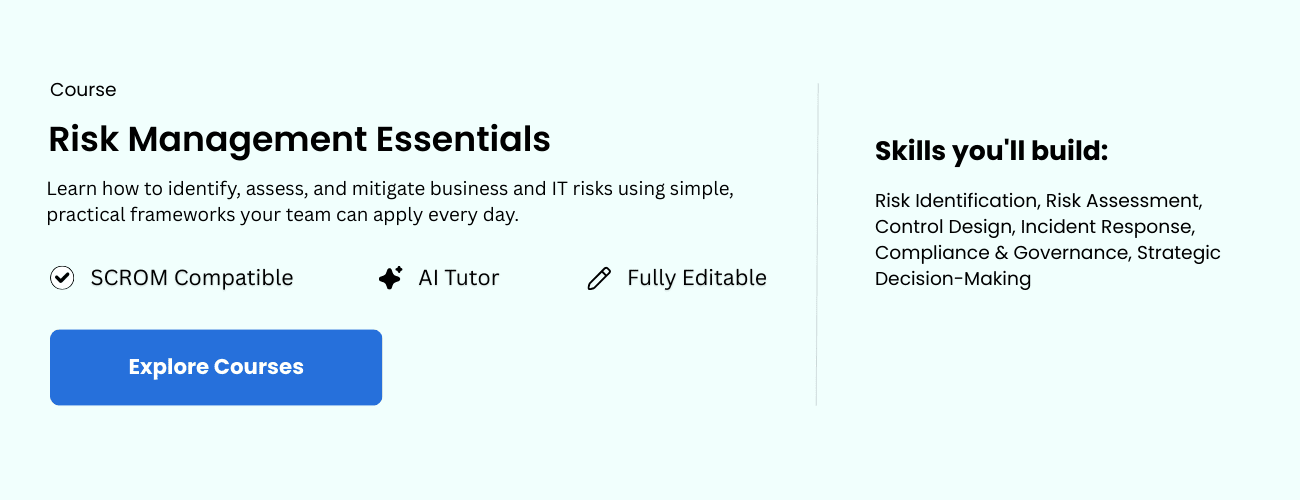The Importance of Data Protection Compliance Training
Building a Data Security Culture
Effective training fosters a proactive security mindset among employees. Staff learn to identify threats like phishing, safeguard sensitive information, and respond properly to incidents. Embedding a culture of compliance demonstrates organizational commitment to privacy, boosting stakeholder confidence and reducing risks associated with human error.
Supporting Regulatory Compliance
Regulations like the General Data Protection Regulation (GDPR) in the EU and the California Consumer Privacy Act (CCPA) in the US impose strict data handling standards. Compliance often mandates staff training to ensure understanding and proper implementation of policies. Non-compliance can lead to hefty fines—up to 4% of global turnover under GDPR—and serious reputational damage.
Implications of Regulations like GDPR and CCPA
GDPR: A Global Benchmark
Since its enactment in 2018, GDPR has set a worldwide standard for data protection. It requires organizations to adopt privacy-by-design principles, conduct regular data audits, and be transparent about data processing. The regulation emphasizes individual rights, such as data access and erasure, making staff training on these aspects essential.

CCPA: Empowering Consumers
Implemented in 2020, the CCPA grants California residents rights to access, delete, and opt out of data-selling practices. Organizations must create processes to uphold these rights, making employee awareness critical. Proper training reduces violations and minimizes fines associated with non-compliance.
Broader Impact on Business Operations
Both regulations influence organizational policies, third-party management, and incident response plans. Training ensures staff at all levels understand and adhere to these legal standards, helping organizations proactively manage risks in a complex regulatory environment.
Roles and Responsibilities of a Data Protection Officer (DPO)
The Data Protection Officer (DPO) plays a central role in ensuring organizations handle personal data responsibly and comply with relevant data laws. Their mission is to safeguard individual rights while maintaining organizational trust and legality. Let’s explore their core duties, essential skills, and significance in fostering a privacy-aware culture.
Monitoring Data Processing Activities
A key DPO responsibility is overseeing all data processing within the organization. This includes conducting regular audits, mapping data flows, and ensuring compliance with privacy policies and laws. Tracking data activities helps identify risks and ensures transparency, such as maintaining records required under GDPR Article 30.
Ensuring Regulatory Compliance
The DPO guides the organization in meeting legal obligations related to data protection. They interpret laws, advise departments on privacy issues, and help develop policies that align with regulations. Managing breach responses, supporting data subjects’ rights, and conducting Data Protection Impact Assessments (DPIAs) are vital tasks to prevent fines and legal conflicts.
Serving as Liaison with Authorities
The DPO acts as the main contact point with data protection authorities. They coordinate communication, report breaches, and assist during audits or investigations. By demonstrating compliance through active engagement, they build trust with regulators and reinforce organizational credibility.
Skills Necessary for Effective DPOs
- Strong legal and regulatory knowledge of GDPR, CCPA, and related laws
- Analytical skills to assess data processes and risks
- Excellent communication skills for training and policy dissemination
- Objectivity and independence to challenge practices without conflicts of interest
- Problem-solving abilities for the quick resolution of privacy concerns
Promoting a Culture of Data Privacy
Beyond technical oversight, DPOs cultivate a privacy-first mindset across the organization. They develop training programs, formulate privacy policies, and encourage awareness about data protection principles. Embedding these values enhances risk management and strengthens the organization’s reputation and stakeholder trust.
Key Responsibilities of a DPO
Overseeing Data Processing Operations
The DPO monitors all activities involving personal data, conducting audits and ensuring adherence to data governance policies. They identify vulnerabilities and help prevent breaches by establishing proper data management practices.
Providing Expert Compliance Advice
Serving as an internal privacy consultant, the DPO guides departments on data collection, minimization, and the rights of data subjects. Their insights are vital during project planning to embed privacy by design and default.
Acting as Contact Point for Data Subjects and Authorities
The DPO manages requests from individuals exercising their data rights and liaises with authorities, reporting breaches and coordinating investigations. This role promotes transparency, accountability, and regulatory compliance.
Training and Awareness Raising
One of their responsibilities is to educate staff about privacy policies and security practices. Regular training fosters a privacy-conscious environment and reinforces compliance throughout the organization.
Monitoring Compliance and Managing Breaches
The DPO reviews processes and documentation regularly, ensuring ongoing compliance. In the event of a breach, they coordinate responses, assess risks, and ensure timely notification to stakeholders and regulators.
Essential Skills and Qualifications for DPOs
Effective DPOs must combine legal expertise, risk management skills, and strong communication abilities. They should have a deep understanding of data privacy laws, conduct risk assessments, and communicate complex concepts clearly.
Legal Expertise and Data Privacy Knowledge
A core qualification is comprehensive knowledge of laws like GDPR, CCPA, and other applicable standards. This expertise enables them to interpret legal texts, identify compliance gaps, and advise organizations accurately.
Risk Management Capabilities
DPOs need strong analytical skills to evaluate vulnerabilities, conduct Data Protection Impact Assessments, and embed privacy by design. Proactive risk management reduces the chances of breaches and sanctions.
Communication and Interpersonal Skills
As a bridge between technical teams, management, and data subjects, DPOs must explain privacy concepts clearly. Effective communication fosters understanding and collaboration, which are essential for successful compliance.
Additional Qualifications and Traits
- Certifications such as CIPP, CDPO, or similar recognized credentials
- Experience in GDPR compliance, data management, or cybersecurity
- Ethical judgment and problem-solving skills
The DPO’s Role in Promoting a Culture of Data Privacy
DPOs are key in fostering an organizational culture that values data privacy. Their efforts focus on raising awareness, embedding privacy into everyday operations, and engaging leadership to prioritize data protection as a core principle.
Building Privacy Awareness
The DPO organizes training, workshops, and awareness initiatives to educate staff on privacy principles like data minimization and individuals’ rights. Regular education enhances staff understanding, reducing risks of accidental breaches and fostering responsible data handling.
Embedding Privacy into Operations
Beyond awareness, DPOs integrate privacy into workflows through policies, privacy impact assessments, and data inventory management. Advising on privacy by design during product development ensures security is built into systems from the outset.
Fostering Leadership Engagement
The DPO advocates for privacy as a strategic priority, encouraging leadership to support privacy initiatives, allocate resources, and respond swiftly to data mishandling. Recognizing exemplary practices motivates the entire organization to uphold high data protection standards.
Practical Examples of DPO Initiatives
- Mandatory privacy training for new employees
- Regular privacy audits and feedback sessions
- Internal newsletters highlighting privacy tips and updates
- Involving privacy in vendor assessments
Best Practices for Data Protection Compliance Training: Building an Effective Program
Creating a successful compliance training program involves strategic design, engaging content, and a culture of continuous improvement. The following best practices guide organizations in developing impactful data privacy training initiatives.
1. Conduct a Needs Assessment to Tailor Content
Identify specific organizational risks and employee roles through surveys, interviews, or audits. Customizing training ensures relevance, increases engagement, and improves the practical application of privacy principles aligned with job responsibilities.
2. Develop Engaging and Interactive Content
Use quizzes, simulations, and real-world scenarios to make learning active. Interactive modules like phishing simulations or role-playing enhance retention and prepare employees for actual threats.
3. Emphasize Role-Specific Responsibilities
Design modules that address unique privacy challenges faced by different departments, such as IT, focusing on access control, and HR on handling PII. This clarity encourages accountability and consistent behavior.
4. Incorporate Regulatory and Industry Standards
Align content with laws like GDPR and CCPA. Use case studies of breaches to illustrate the importance of compliance and demonstrate real-world consequences of negligence.
5. Implement Continuous and Reinforced Learning
Regular refresher courses, updates, and microlearning keep security top of mind. Use assessments and resource libraries to support ongoing education and adapt to new threats.
6. Measure Effectiveness and Gather Feedback
Track participation, quiz scores, and incident reports. Use surveys and analytics to evaluate impact, identify gaps, and refine training content for continuous improvement.
Creating Custom, Engaging Security Training Modules
Effective cybersecurity training should be tailored to organizational roles and delivered engagingly. This approach not only boosts retention but also empowers employees to identify and counter cyber threats actively.
Understanding Your Audience and Roles
Assess different job responsibilities to deliver relevant content. For instance, finance teams need training on fraud detection, while IT staff focus on threat detection and access controls.
Incorporating Real-World Scenarios
Use recent case studies and simulated attacks to make training practical. Examples like phishing emails help employees practice recognizing threats and build confidence in responding.
Utilizing Interactive Modules
Include quizzes, gamification, and decision simulations. These strategies make learning engaging, competitive, and memorable, leading to better security behaviors.
Addressing Specific Threats and Challenges
Focus on current risks like ransomware, insider threats, and data leakage. Teach detection signs and proper procedures to minimize vulnerabilities.
Regular Content Updating
Keep training current with the latest threats and best practices. Collaboration with cybersecurity experts or industry updates ensures relevance and credibility.
Leveraging Technology for Customization
Use Learning Management Systems (LMS) to personalize learning paths, embed multimedia, and support different learning styles. Adaptive training enhances comprehension and application.
Final Tips
- Set clear learning objectives aligned with security policies
- Make content relatable through relevant examples
- Encourage active participation via discussions and simulations
- Continuously measure and refine content based on feedback
Leveraging Technology for Compliance Training
Modern technology tools elevate compliance training effectiveness by making content accessible, engaging, and scalable. Embracing these innovations helps organizations deliver comprehensive and compelling programs.
Utilizing E-Learning Platforms
Platforms like Moodle or SAP Litmos enable widespread access to training materials, tracking progress, and analyzing performance. They support remote learning and standardize content delivery, leading to higher completion rates.
Implementing Simulations
Simulations recreate real-world scenarios such as phishing attacks or data breach scenarios, offering hands-on experience. This experiential learning enhances preparedness and decision-making skills.
Enhancing Engagement with Gamification
Adding game elements like points, badges, and leaderboards motivates employees to participate actively. Gamification turns mandatory training into an engaging, rewarding activity, increasing knowledge retention.
Integrating Technologies for a Learning Ecosystem
Combining platforms, simulations, and gamification creates a dynamic environment tailored to organizational needs. Personalization features ensure targeted reinforcement, supporting compliance and ethical practices.
Continuous Education and Real-Time Updates
Cyber threats and regulations evolve rapidly. Continuous education and timely updates are vital to maintaining an effective cybersecurity compliance posture. They ensure staff can recognize, respond to, and prevent the latest threats while adhering to current standards.
The Need for Ongoing Training
Regular refreshers reinforce best practices and reduce human errors—the leading cause of breaches. Sustained training also enhances organizational resilience against cyberattacks.
Updating Staff on New Regulations
Stay current with legal changes such as GDPR updates or new industry standards. Webinars, newsletters, and refresher courses keep staff informed and compliant.
Responding to Emerging Threats
Rapidly evolving attack methods, such as ransomware or sophisticated phishing schemes, require real-time alerts and training. Incorporate recent threat intelligence into refreshers and simulations.
The Role of Technology
Tools like Learning Management Systems, simulated exercises, and automated alerts facilitate scalable, continuous education. These methods help prepare employees for emerging dangers without overwhelming resources.
Effective Strategies
- Schedule regular training updates and refreshers
- Use real-world scenarios for practical learning
- Deploy multiple channels—online modules, workshops, newsletters
- Monitor understanding through assessments and feedback
- Engage cybersecurity experts for the latest insights
Measuring Training Effectiveness and Ensuring Compliance
Evaluating training impact is crucial for maintaining high standards and compliance. Techniques like quizzes, audits, and feedback systems help organizations fine-tune their programs and demonstrate effectiveness.
Using Quizzes and Assessments
Post-training quizzes test comprehension and retention. Well-designed assessments highlight strengths and reveal areas needing reinforcement, boosting overall learning outcomes.
Conducting Audits and Observations
Regular internal or external audits verify adherence to training standards. On-the-job observations assess how well employees apply their knowledge in real situations, ensuring compliance and risk mitigation.
Gathering Feedback
Surveys and interviews provide insights into participants’ perceptions and suggestions. Continuous feedback helps adapt content, keeping the training engaging and relevant.
Data-Driven Improvements
Integrate metrics from assessments and audits within analytics dashboards to identify gaps. Using this data, organizations can refine training modules, update content, and improve compliance efforts.
Ongoing Monitoring
Regular evaluation cycles ensure training remains effective, addressing new risks and compliance updates proactively. This ongoing process supports a resilient security posture and fosters a culture of continual learning.
Final Takeaways: Strengthening Data Privacy Through Leadership and Learning
Guarding data privacy in today’s digital landscape depends heavily on strong leadership, especially the role of the Data Protection Officer. The DPO guides organizations in legal compliance, risk management, and establishing a culture that values privacy. Equally important is ongoing, targeted training that empowers employees to play their part in protecting data, recognizing threats, and responding appropriately.
Continuous education, rapid updates on emerging threats and regulations, and fostering an environment of awareness are critical components for resilience. Organizations committed to these principles demonstrate responsibility, build stakeholder trust, and reduce risks effectively.
Ultimately, investing in leadership and learning creates a proactive, compliant, and trustworthy organization ready to meet the challenges of data privacy in a dynamic digital world.



















